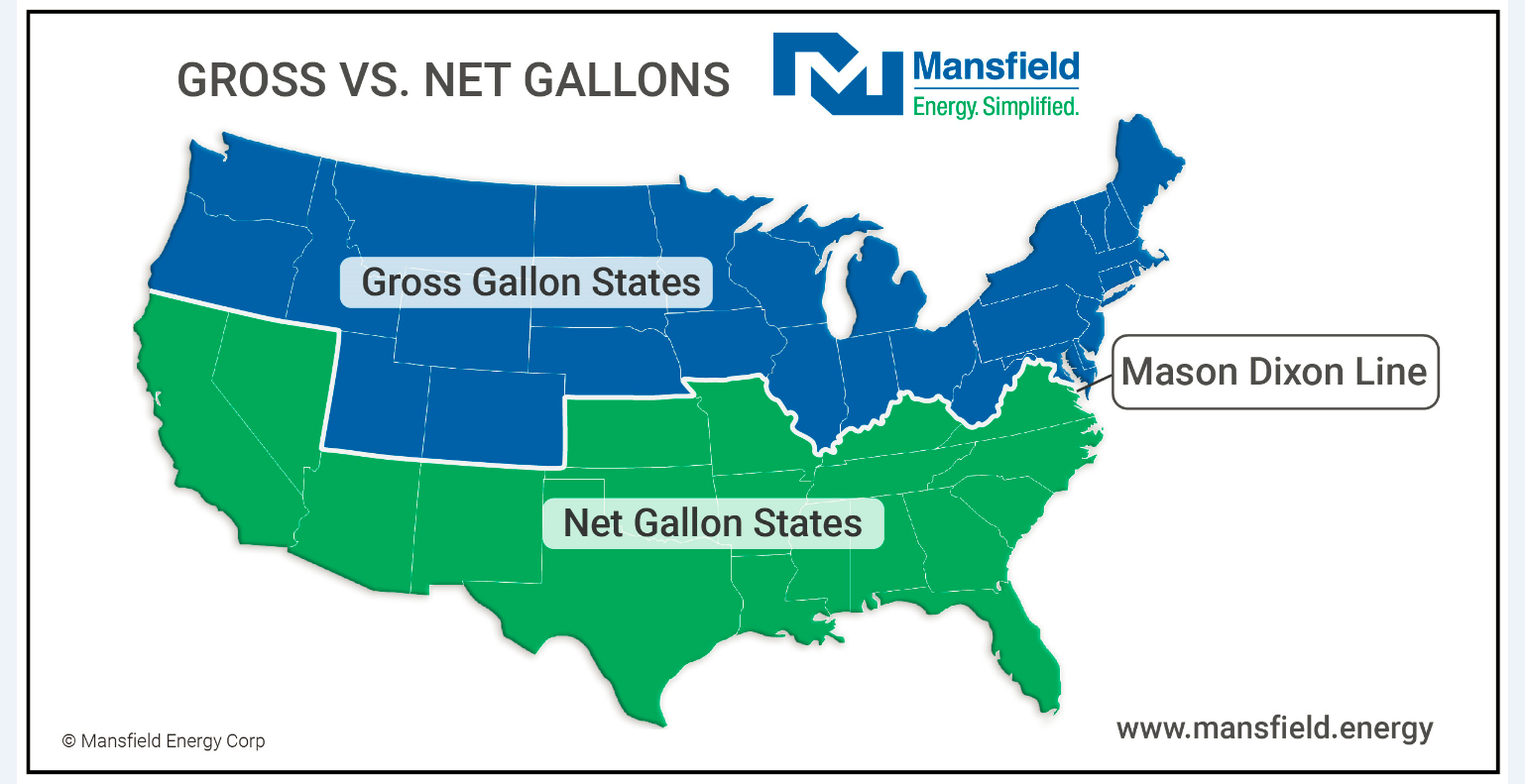
How Laws of Nature Impact Fuel Procurement
Net verses Gross Gallons – What’s the difference?
Have you ever questioned why there are two different gallon amounts listed on a BOL (Bill of Lading) for the same delivery? You may have ordered a specific gallon amount (gross) but then were invoiced for a net amount. It’s a common quandary for fuel purchasers.
How Laws of Nature Impact Your Fuel Bill
The discrepancy between net and gross fuel purchasing stems from a law of nature called Thermal Expansion. When molecules are heated, they begin to move more quickly, causing the substance to expand. Conversely, when the molecules cool they move more slowly and the substance contracts. It’s what happens when you bring a helium balloon into a cold room. As the molecules cool, they lose energy and condense – decreasing the volume inside the balloon and causing it to shrivel and sink.
Like these substances, fuel also expands and contracts depending on the temperature. For example, when 1,000 gallons of fuel is delivered to a location in Texas on a hot summer day, the fuel is pumped into a cool underground storage tank with an average temperature of 50 degrees. The fuel loses volume as it cools. In this situation, a full 1,000 gallons may have been delivered, but the location will have less than 1,000 gallons in its tank.
How to Measure Fuel Volume Variances
Since the physical amount of fuel can vary between the loading destination and the delivery destination, there could be a discrepancy between the gallons purchased and the physical product delivered. To protect both parties from the fluctuating fuel volumes, the Petroleum industry set a temperature standard by which petroleum product volume would be measured.
In the U.S., 60°F is considered the temperature at which fuel is “normal” in weight, volume and energy content; thus it is the standard temperature used to measure true fuel volume. One gallon of fuel occupies 231 cubic inches of space at 60°F. Fuel expands as it exceeds 60°and contracts as it falls below 60°. What does that mean for fuel purchasers?
There must be an adjustment made in the measurement of fuel to determine an accurate measure of volume. The amount of fuel dispensed at the rack is called “gross gallons.” The gross gallon amount is adjusted for temperature variance based on its specific gravity using a calculation called the thermodynamic formula. The result of this calculation is what you see listed on the BOL as “net gallons.” In simple terms, Net Gallons = Temperature Adjusted Gross Gallons.
How It Impacts Your Bottom Line
The gross-to-net conversion ensures organizations receive exactly what they purchased. If net gallons is the temperature adjusted amount, shouldn’t that measurement always be used for billing? Not necessarily. Remember, using net gallons adjusts the volume of fuel to the gallon volume at 60°. If the temperature is below 60°, there would be less physical gallons delivered than represented by the net gallon calculation. For example, a company in Minnesota purchasing 7500 gallons of fuel on a cold winter day should be billed gross gallons rather than net gallons.
This is because net gallons are automatically temperature adjusted to the amount of volume that would exist at 60°F. However, temperatures are generally below 60° in northern states, especially during the winter months. Billing this customer in net gallons would result in the customer paying for 7500 gallons (the volume at 60°), but only receiving 7300 gallons (the actual volume at a lower temperature) due to the contraction of the fuel caused by colder weather. For this reason, it is important to verify your billing terms with your fuel provider.
As a general rule, companies located in warmer, southern regions should be billed on net gallons, while those in cooler, northern regions should be billed by gross gallons. Mansfield uses the Mason-Dixon Line to determine billing approaches, unless requested otherwise by the customer.
I hope this sheds some light on an interesting phenomena in fuel procurement. If you have any questions, please let me or your Mansfield representative know.
This article is part of Daily Market News & Insights
Tagged:
MARKET CONDITION REPORT - DISCLAIMER
The information contained herein is derived from sources believed to be reliable; however, this information is not guaranteed as to its accuracy or completeness. Furthermore, no responsibility is assumed for use of this material and no express or implied warranties or guarantees are made. This material and any view or comment expressed herein are provided for informational purposes only and should not be construed in any way as an inducement or recommendation to buy or sell products, commodity futures or options contracts.






